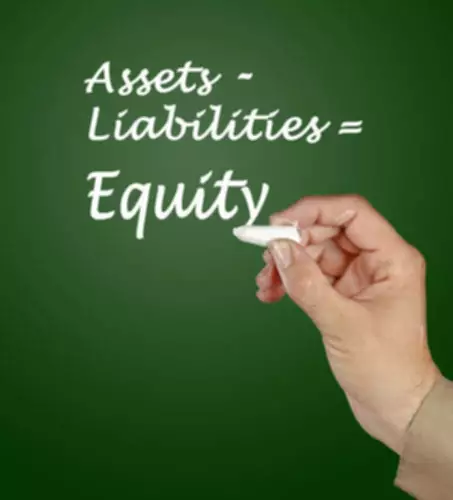Content

Debt is a liability, whether it is a long-term loan or a bill that is due to be paid. The major and often largest value asset of most https://www.bookstime.com/articles/accounting-equation companies be that company’s machinery, buildings, and property. These are fixed assets that are usually held for many years.

A company’s financial risk increases when liabilities fund assets. This is sometimes referred to as the company’s leverage. Let’s consider a company whose total assets are valued at $1,000. In this example, the owner’s value in the assets is $100, representing the company’s equity. One of the main benefits of using the accounting equation is the fact that it provides an easy way to verify the accuracy of your bookkeeping. It also helps measure the profitability of your business.
Accounting Ratios and Formulas: The Basics You Need to Know
Get to know better about different accounting equations that are needed in your businesses. This version of the accounting equation shows the relationship between shareholder’s equity and debt. The shareholder’s equity is what remains after all liabilities are subtracted. Creditors, or the people who lend money, are the ones who have the first claim to a company’s assets. Having a basic understanding of accounting is essential to running a small business. Keeping up with various formulas and bookkeeping processes can be time-consuming, tedious work.

Total liabilities include all of the costs your business must pay to outside parties. Total equity is the amount of the money you as the owner have invested in the business. In the early stages of business, the net income equation may demonstrate a net loss. Becoming profitable or establishing a positive net income should be the goal of every small business. Long-term liabilities, on the other hand, include debt such as mortgages or loans used to purchase fixed assets. With the information that is given in the example, we see that Ed has a store that is valued at $40,000 and equipment that is valued at $10,000.
Shareholder’s Equity
When building up a financial statement, the most basic way to do it is by leveraging a technique called an accounting equation. Current assets are the items of value your business owns that can convert to cash within one year. Likewise, current liabilities are your debts that are due within one year. Use the current ratio to compare your current assets to current liabilities. Use the cost of goods sold (COGS) formula to determine how much it costs you to develop products or services during a period.
Here are four practical examples of how the accounting equation works in a double-entry system. Let’s plug this into the equation to see if Ed’s accounts are balanced. Things such as utility bills, land payments, employee salaries, and insurance – those are all examples of liabilities. Does your business have less inventory than what you started with?
You must cCreate an account to continue watching
A current asset is cash or something that can easily be converted to cash, such as accounts receivable and short-term investments. In order to understand the accounting equation, you have to understand its three parts. Good examples of assets are cash, land, buildings, equipment, and supplies.
These resources are supplied by the proprietors to the firm. Owner contributions and income result in an increase in capital, whereas withdrawals and expenses cause capital to decrease. Now that you understand the parts of the accounting equation, let’s talk about how it works.
The Accounting Equation: What Is It, Formula, and Examples
One of the most crucial accounting formulas is the accounting equation, also known as the balance sheet equation. The equation remains balanced, as assets and liabilities increase. The balance sheet would experience an increase in assets and an increase in liabilities.
What is the accounting equation for a small business?
- Balance sheet equation (the accounting equation).
- Net income equation.
- Breakeven point equation.
- Quick ratio equation.
- Profit margin equation.
- Debt-to-equity ratio equation.
- Cost of goods sold equation.
- Retained earnings equation.
By taking the time to investigate and understand your business’s financial health, you can make accurate decisions about your future and set your business up for success. For example, the total debt ratio can serve as a key indicator of whether it’s the right time to take out a new loan. Fortunately, you don’t have to be a math whiz to be a successful entrepreneur. Even though running a business requires solving occasional financial equations, they’re not complex — and you’re never more than a click away from a calculator.
Why your financial model doesn’t work, and how to troubleshoot
On the liabilities and equity side of the equation, there is also an increase of $20,000, keeping the equation balanced. Changes to assets, specifically cash, will increase assets on the balance sheet and increase cash on the statement of cash flows. Changes to stockholder’s equity, specifically common stock, will increase stockholder’s equity on the balance sheet. It gives meaning to the balance sheet structure and is the foundation of double-entry accounting. Double-entry accounting is the practice where one transaction affects both sides of the accounting equation. This is used extensively in journal entries, where an increase or decrease on one side of the equation may be explained by an increase or decrease on the other side.
What is the mathematical equation used in business?
The formula for profit and loss is given based on the selling price and cost price of a commodity. Both these measures have their percentage value also and they are given by; Profit% = [(S.P. – C.P.)/C.P]. x 100 = (Profit/C.P.)